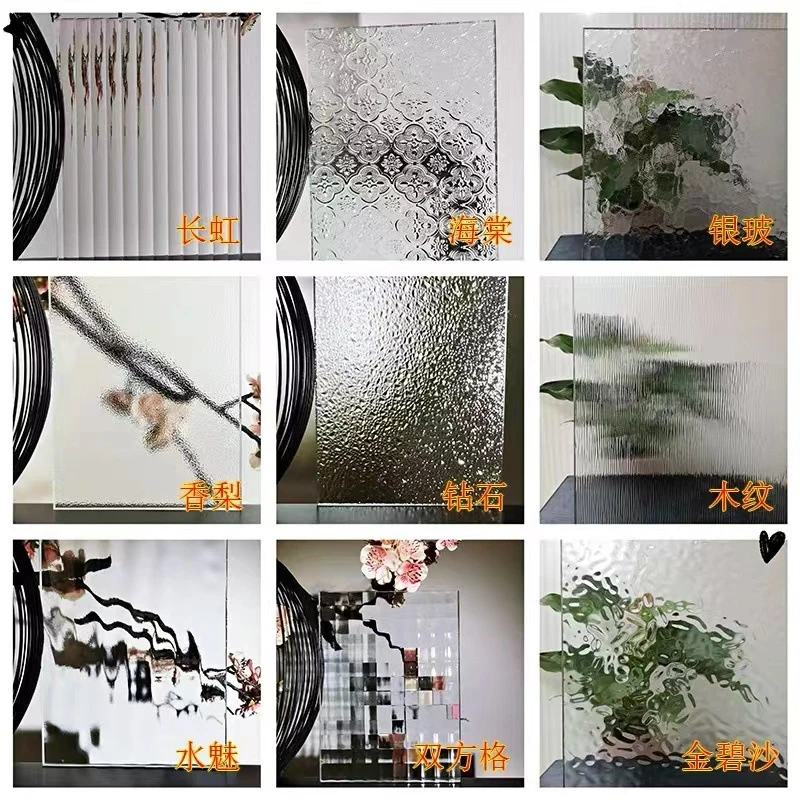Reflective Grey Glass An Exploration of Aesthetic and Functionality
In the realm of modern architecture and design, materials play a pivotal role in shaping our experiences and interactions within spaces. One such material that has gained considerable attention is reflective grey glass. This versatile medium not only enhances the visual appeal of buildings and interiors but also introduces a myriad of functional benefits that cater to contemporary needs. As we delve into the characteristics, applications, and impact of reflective grey glass, it becomes evident that it is more than just a stylish choice—it embodies a harmony between aesthetics and practicality.
Reflective grey glass is defined by its subtle, muted tint and a mirror-like finish that offers a level of privacy without completely obstructing views. Its unique coloration makes it particularly adept at blending into various environments, be it urban landscapes or serene natural settings. This material seamlessly reflects its surroundings, creating a dynamic interplay between structure and environment. As light interacts with the glass, it transforms throughout the day, reflecting different hues depending on the time and intensity of sunlight. This quality not only adds an element of visual intrigue but also fosters a sense of connection between the building and its locale.
One of the most significant advantages of reflective grey glass is its energy efficiency. With growing concerns about climate change and sustainability, architects and designers are increasingly seeking materials that help reduce energy consumption. Reflective glass acts as an effective barrier against solar heat gain while still allowing ample natural light into spaces. This characteristic can drastically reduce the reliance on artificial lighting and air conditioning, contributing to lower energy costs and a smaller carbon footprint. Additionally, many varieties of reflective glass come with coatings that further enhance their thermal performance, making them ideal for various climates.
reflective grey glass
In terms of applications, reflective grey glass is incredibly versatile. In commercial settings, it is widely utilized in facades, offering a sleek and modern appearance that elevates the overall aesthetic of office buildings, shopping centers, and corporate headquarters. The reflective quality not only serves to beautify the architecture but also helps in creating a sense of openness in urban environments, as it can visually expand the space. Moreover, many high-rise buildings incorporate this glass to minimize glare and enhance occupants' comfort without sacrificing the benefit of panoramic views.
In residential design, reflective grey glass is finding its place in windows, doors, and even interior partitioning. Homeowners appreciate the elegance this material brings to their living spaces, where it can be used to create stunning visual focal points. The privacy offered by the reflective finish allows residents to enjoy their homes without feeling exposed, making it an ideal choice for urban apartments or secluded retreats. Furthermore, its durability and ease of maintenance make it a practical option for busy households.
Beyond its physical attributes, reflective grey glass evokes an emotional response. It invites contemplation, inviting onlookers to engage with both the space and their surroundings. When light dances upon its surface, it can transform mundane moments into something beautiful and thought-provoking. As urban environments become increasingly crowded, the need for such contemplative spaces, which offer a moment of respite and reflection, has never been more critical.
In conclusion, reflective grey glass embodies a remarkable intersection of art and science. Its aesthetic qualities enhance architectural designs while its energy-efficient properties cater to the pressing demands of sustainability. As designers and architects continue to embrace this innovative material, it is clear that reflective grey glass is not merely a trend but a staple in the pursuit of modern elegance and practicality. Its ability to enrich our built environment while offering critical functionality ensures that it will remain a vital component of architectural innovation for years to come.
 Afrikaans
Afrikaans  Albanian
Albanian  Amharic
Amharic  Arabic
Arabic  Armenian
Armenian  Azerbaijani
Azerbaijani  Basque
Basque  Belarusian
Belarusian  Bengali
Bengali  Bosnian
Bosnian  Bulgarian
Bulgarian  Catalan
Catalan  Cebuano
Cebuano  Corsican
Corsican  Croatian
Croatian  Czech
Czech  Danish
Danish  Dutch
Dutch  English
English  Esperanto
Esperanto  Estonian
Estonian  Finnish
Finnish  French
French  Frisian
Frisian  Galician
Galician  Georgian
Georgian  German
German  Greek
Greek  Gujarati
Gujarati  Haitian Creole
Haitian Creole  hausa
hausa  hawaiian
hawaiian  Hebrew
Hebrew  Hindi
Hindi  Miao
Miao  Hungarian
Hungarian  Icelandic
Icelandic  igbo
igbo  Indonesian
Indonesian  irish
irish  Italian
Italian  Japanese
Japanese  Javanese
Javanese  Kannada
Kannada  kazakh
kazakh  Khmer
Khmer  Rwandese
Rwandese  Korean
Korean  Kurdish
Kurdish  Kyrgyz
Kyrgyz  Lao
Lao  Latin
Latin  Latvian
Latvian  Lithuanian
Lithuanian  Luxembourgish
Luxembourgish  Macedonian
Macedonian  Malgashi
Malgashi  Malay
Malay  Malayalam
Malayalam  Maltese
Maltese  Maori
Maori  Marathi
Marathi  Mongolian
Mongolian  Myanmar
Myanmar  Nepali
Nepali  Norwegian
Norwegian  Norwegian
Norwegian  Occitan
Occitan  Pashto
Pashto  Persian
Persian  Polish
Polish  Portuguese
Portuguese  Punjabi
Punjabi  Romanian
Romanian  Russian
Russian  Samoan
Samoan  Scottish Gaelic
Scottish Gaelic  Serbian
Serbian  Sesotho
Sesotho  Shona
Shona  Sindhi
Sindhi  Sinhala
Sinhala  Slovak
Slovak  Slovenian
Slovenian  Somali
Somali  Spanish
Spanish  Sundanese
Sundanese  Swahili
Swahili  Swedish
Swedish  Tagalog
Tagalog  Tajik
Tajik  Tamil
Tamil  Tatar
Tatar  Telugu
Telugu  Thai
Thai  Turkish
Turkish  Turkmen
Turkmen  Ukrainian
Ukrainian  Urdu
Urdu  Uighur
Uighur  Uzbek
Uzbek  Vietnamese
Vietnamese  Welsh
Welsh  Bantu
Bantu  Yiddish
Yiddish  Yoruba
Yoruba  Zulu
Zulu 

